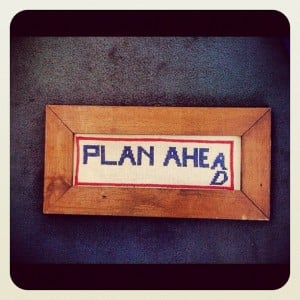Managing metal fabrication costs can pose many challenges, such as fluctuating raw material prices, rising energy and transportation costs, and product design scope creep. Among these, avoiding scope creep can prove to be one of the toughest. However, by applying the Design for Manufacturing and Assembly (DFMA) approach, a project has a much better chance of being completed on time with minimal waste.

Image Credit: Craighton Miller via Flickr
Design for Manufacturing and
Assembly
DFMA is a combination of two methodologies: Design for Manufacture, design for ease of manufacturing parts that form a product, and Design for Assembly, design for ease of assembly. The DFMA approach to metal manufacturing aims to reduce and minimize assembly costs and waste; therefore, avoiding inefficiencies throughout the manufacturing process.
Avoid Scope Creep and Reduce Time-To-Market
Scope creep, or any additional uncontrolled changes in a project’s growth, can be a result of ineffective change control, weak project management, poor communication or ill-defined project objectives. It can lead to delays, unforeseen expenses and additional pressure on logistics to deliver on time.
Below are four ways to help you manage your scope and avoid scope creep by applying DFMA:
- Identify Potential Scope Changes: Recognize early on in the planning phase of a project what potential changes might occur that could slow the project down or create inefficiencies. Identifying and preparing for project shifts can help eliminate project waste in the form of time, energy, labor or defective product.
- Establish a Shared Methodology: Gain buy-in for the DFMA methodology from all critical parties involved—the earlier, the better. Reduce cost by minimizing the number of parts, minimizing operations and process steps, and balancing tooling costs. Just like any project strategy, you want all critical decision makers on board before moving forward.
- Communicate Often: It is important that whoever is assigned to the project has a direct line of contact and support from their project manager. Once potential changes and errors are identified, they should be communicated throughout the internal team as well as to external production partners. Also, build frequent, incremental reviews into the project schedule so that everyone is on the same page throughout the project’s lifespan.
- Implement a Scope Management Plan: Managing the scope early and often allows project managers to effectively delegate tasks, conduct consistent milestone reviews, meet deadlines and produce deliverables.
Scope creep can’t be avoided 100% of the time, but you give yourself a much better chance by applying DMFA.
“Let our advance worrying become advance thinking and planning.”
- Winston Churchill
For more practical strategies, tips and technologies that can help you achieve greater productivity and design efficiency, download:
“The Modern Engineer’s Guide To Getting It Done.”
Editor's note: This post was originally published in October 2013 and has been updated for comprehensiveness.


